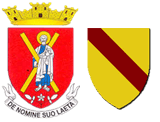Medieval Evol
Cultural heritage
Vernacular heritage
As it leaves Olette, the road climbs in a series of hairpins up to Evol. The surprise then lies in the unity of the buildings of this ancient medieval village, first mentioned in 957, and today ranked among the Most beautiful villages of France. The walls of the houses are of shale, the stones stacked upon each other, and the roofs are of local schist known as lloses. The houses are in a strip along the road, below the church of Saint Andrew, classified a Historic monument since 1943. The streets are narrow, sometimes in steps. At the entrance to the village, a wash house has been preserved. Evol has three altogether. There is no lack of water. A small water channel crosses the village and lulls the hamlet with its sound.
Victim of the exodus, like so many other villages, Evol, which had nearly 420 inhabitants in 1851, has seen its population decrease. Today, its 40 residents give life to the hamlet.
The old village school has been turned into an exhibition room dedicated to the writer Ludovic Massé, born in the village in 1900. Agrarian tools from the beginning of the 20th century are also exhibited here.
The houses have been renovated, respecting the constructions of the past, with shale walls and Evol lloses on the roofs. The authenticity of the village has been preserved. The bread ovens protruding from the walls still testify to the rural life of the beginning of the 20th century.
« At Evol there are two kinds of lloses on the cami Ramader. At the Pont de la LLosa, it is very hard. You make a roof out of that, you’ll have it for life. The one above, at the Roc des Moros is softer. I have worked with lloses everywhere , but none had the quality of that of Evol, it was the best.
When you’re taking out lloses, you have to be careful, don’t do it any old how, because every bit can be used. The small pieces can be used to fill in holes in the walls.”
Jacky Léal, 2017.
